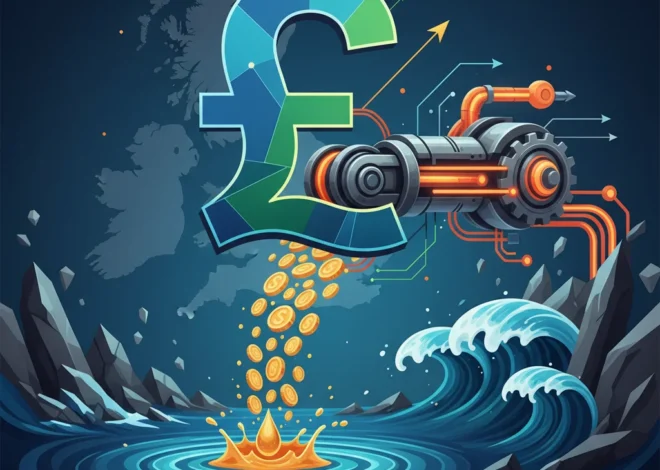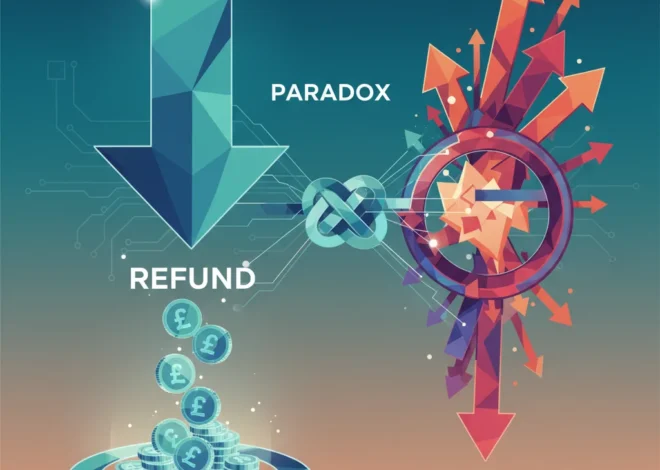
The Strategist’s Puzzle: What a Classic Logic Problem Reveals About Modern Finance
In the world of finance and investing, we are inundated with data. We track stock market tickers, analyze economic reports, and build complex models to predict the future. But what if the most crucial information isn’t in the numbers themselves, but in what other market participants know—and what they know you know? A deceptively simple numbers puzzle, recently featured in the Financial Times, offers a masterclass in the kind of second-order thinking that separates successful traders, investors, and business leaders from the rest.
The puzzle involves two logicians, Sam and Polly. They are told there are two secret integers, x and y, both greater than 1, and their sum is no more than 100. Sam is told only the sum (S = x + y), while Polly is told only the product (P = x * y). The following conversation takes place:
- Polly: “I don’t know the numbers.”
- Sam: “I knew you didn’t know the numbers.”
- Polly: “Now I know the numbers.”
- Sam: “Now I know the numbers.”
The question is: What are the numbers?
At first glance, this seems like an impossible riddle. Yet, within this short exchange lies a powerful lesson in deduction, information asymmetry, and strategic signaling—concepts that are the very bedrock of modern economics, trading, and financial technology.
Deconstructing the Dialogue: A Cascade of Information
To understand the profound implications for finance, we must first solve the puzzle. The solution is found not by crunching numbers, but by analyzing the information revealed at each step. Each statement eliminates a world of possibilities, allowing both participants to zero in on the truth.
Step 1: Polly’s Ignorance (“I don’t know the numbers.”)
Polly knows the product, P. If she immediately knew the numbers, it would mean her product P has only one possible pair of factors (greater than 1). For example, if P was 21, the only factors are 3 and 7, so she would know the numbers. Her statement tells us that her product P must have multiple possible factor pairs.
For instance, if her product was P=24, the numbers could be (2,12), (3,8), or (4,6). She wouldn’t know which pair is correct. This initial statement eliminates all products that are the result of multiplying two prime numbers, among others.
Step 2: Sam’s Certainty (“I knew you didn’t know…”)
This is the most critical piece of information. Sam, who only knows the sum S, was able to predict Polly’s ignorance. How? He looked at his sum S and considered every possible pair of numbers that could add up to it. He realized that for every single one of those pairs, the resulting product would have multiple factorizations.
This is a massive clue. It eliminates many possible sums. For example, Sam’s sum could not be S=11. Why? Because 11 can be broken down into pairs like (2,9), (3,8), (4,7), or (5,6). But it could also be (2,9), wait, S=11 could be (3,8), (4,7), (5,6). Let’s use a better example. Suppose Sam’s sum S was 10. This could be (3,7). The product would be 21. As we saw, a product of 21 has only one factorization (3×7), so Polly *would* have known the numbers. Since Sam *knew* she wouldn’t know, his sum cannot be 10.
This powerful deduction eliminates all sums that can be expressed as the sum of two primes (thanks to a concept related to Goldbach’s Conjecture) and other sums that could lead to a unique product. After this step, we are left with a much smaller list of possible sums for Sam. A few possibilities for S include 11, 17, 23, 27, etc.
Let’s visualize the initial possible sums and how Sam’s statement narrows them down.
| Possible Sum (S) | Example Decomposition | Resulting Product (P) | Is P’s Factorization Unique? | Is this Sum Eliminated by Sam? |
|---|---|---|---|---|
| 8 | 3 + 5 (two primes) | 15 (3×5) | Yes | Yes, Eliminated |
| 12 | 5 + 7 (two primes) | 35 (5×7) | Yes | Yes, Eliminated |
| 11 | (2,9), (3,8), (4,7), (5,6) | 18, 24, 28, 30 | No (all have multiple factors) | No, a Possible Sum |
| 17 | (2,15), (3,14), (4,13)… | 30, 42, 52… | No (all have multiple factors) | No, a Possible Sum |
The Great Disconnect: Decoding the Puzzling Strength of the US Economy
Step 3: Polly’s Epiphany (“Now I know the numbers.”)
Polly hears Sam’s statement and learns which sums are possible. She looks at her product P and its various factor pairs. She can now eliminate any pair whose sum is *not* on the new, shorter list of possible sums. If this process leaves her with only one remaining valid pair, she has her answer.
For example, suppose Polly’s product was P=30. The pairs could be (2,15) with sum 17, (3,10) with sum 13, or (5,6) with sum 11. If 11, 13, and 17 were all on the list of possible sums Sam’s statement allowed, Polly would still be stuck. But if only *one* of those sums (say, 17) remained a possibility after Sam’s filter, she would know the numbers must be (2,15).
Step 4: Sam’s Conclusion (“Now I know the numbers.”)
Sam’s final statement means that of all the possible pairs that add up to his original sum S, only one of them results in a product P that would have given Polly her epiphany in the previous step. He effectively simulated Polly’s thought process for each of his possible pairs and found only one unique path to a solution.
By following this chain of logic, one can deduce the unique answer: the numbers are 4 and 13. (S=17, P=52). This solution is the only one that satisfies the entire logical cascade.
From Puzzles to Portfolios: Information in the Stock Market
This puzzle is far more than a mathematical curiosity. It is a perfect microcosm of how sophisticated players operate in the financial markets, where success hinges on interpreting not just data, but the signals embedded in the actions of others.
Information Asymmetry and Signaling
The core of the puzzle is information asymmetry: Sam and Polly have different, incomplete pieces of information. This is the daily reality of the stock market. A company’s management has deep, internal knowledge (the “sum”), while investors can only see the public outcomes (the “product”).
In this environment, actions become signals. As Nobel laureate Michael Spence theorized, a “signal” is an action taken by an informed party to credibly convey their information to an uninformed party. Consider these real-world parallels to Sam’s and Polly’s statements:
- A CEO announces a major stock buyback. This is not just a financial transaction; it’s a signal. The CEO (like Sam) knows the company’s true health (“the sum”). The buyback signals their belief that the market’s valuation (“the product”) is too low.
- A central bank issues forward guidance. When a Federal Reserve chair says they “knew the market would be uncertain,” they are shaping expectations. This statement, like Sam’s, eliminates certain possibilities (e.g., an imminent rate hike) and allows the market (like Polly) to refine its predictions.
- An activist investor takes a large stake. This action signals they have analyzed the company’s assets (“the product”) and believe there’s a path to a higher valuation (“the sum”) that current management is missing.
The Shadow Portfolio: Is the Insurance Industry's Bet on Private Credit a Ticking Time Bomb?


